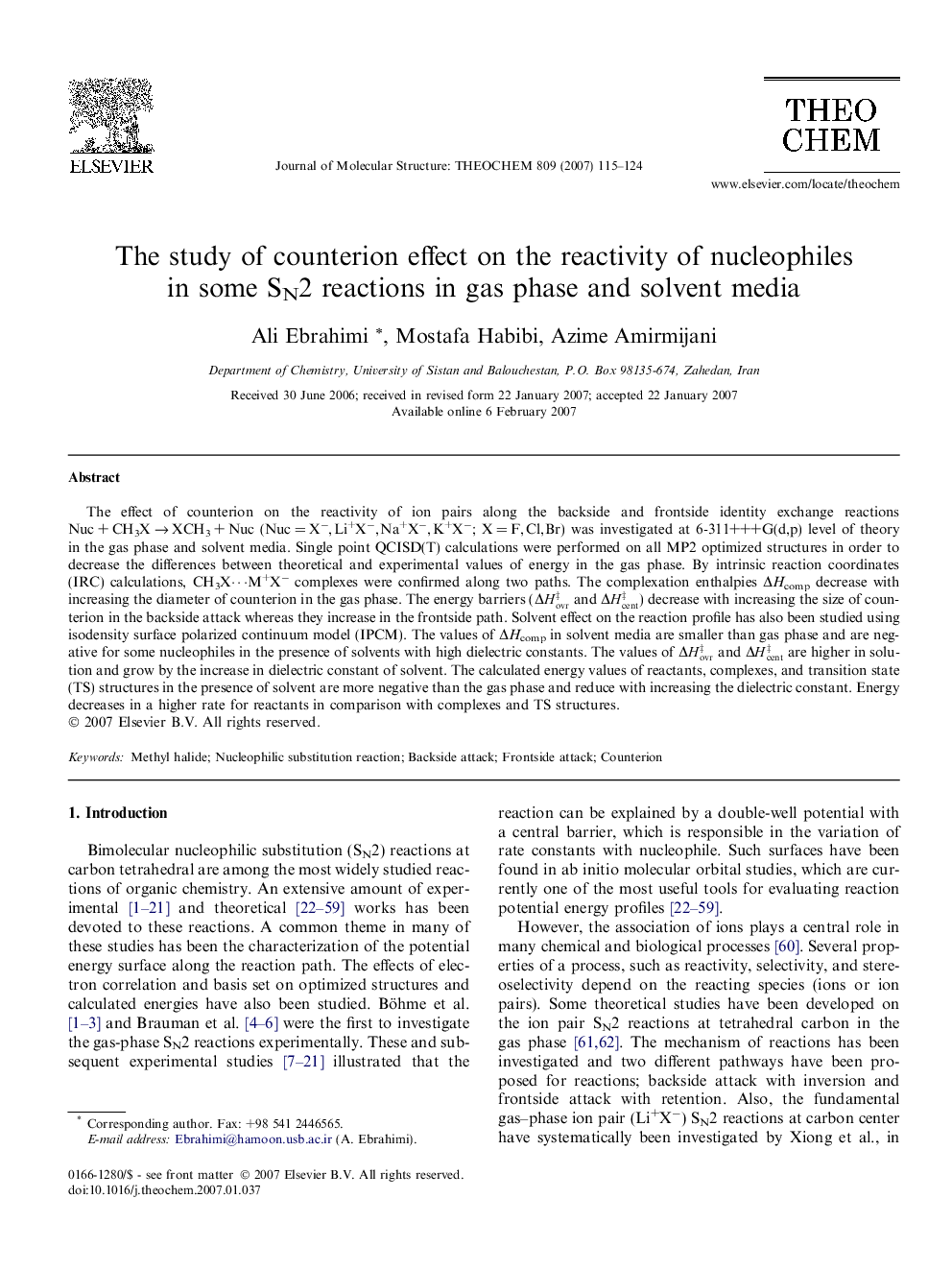| Article ID | Journal | Published Year | Pages | File Type |
|---|---|---|---|---|
| 5417908 | Journal of Molecular Structure: THEOCHEM | 2007 | 10 Pages |
Abstract
The effect of counterion on the reactivity of ion pairs along the backside and frontside identity exchange reactions Nuc + CH3X â XCH3 + Nuc (Nuc = Xâ, Li+Xâ, Na+Xâ, K+Xâ; X = F, Cl, Br) was investigated at 6-311+++G(d,p) level of theory in the gas phase and solvent media. Single point QCISD(T) calculations were performed on all MP2 optimized structures in order to decrease the differences between theoretical and experimental values of energy in the gas phase. By intrinsic reaction coordinates (IRC) calculations, CH3Xâ¯M+Xâ complexes were confirmed along two paths. The complexation enthalpies ÎHcomp decrease with increasing the diameter of counterion in the gas phase. The energy barriers (ÎHovrâ¡ and ÎHcentâ¡) decrease with increasing the size of counterion in the backside attack whereas they increase in the frontside path. Solvent effect on the reaction profile has also been studied using isodensity surface polarized continuum model (IPCM). The values of ÎHcomp in solvent media are smaller than gas phase and are negative for some nucleophiles in the presence of solvents with high dielectric constants. The values of ÎHovrâ¡ and ÎHcentâ¡ are higher in solution and grow by the increase in dielectric constant of solvent. The calculated energy values of reactants, complexes, and transition state (TS) structures in the presence of solvent are more negative than the gas phase and reduce with increasing the dielectric constant. Energy decreases in a higher rate for reactants in comparison with complexes and TS structures.
Related Topics
Physical Sciences and Engineering
Chemistry
Physical and Theoretical Chemistry
Authors
Ali Ebrahimi, Mostafa Habibi, Azime Amirmijani,
